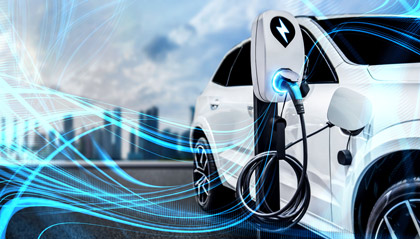Electric vehicles are poised to play an important role in the global transition to net-zero carbon emissions. This Spotlight takes a closer look at the issue from differing perspectives.
Electric Vehicles (EVs) represent a paradigm shift in the automobile industry, functioning on electric engines instead of the traditional gasoline or diesel engines. The core of their operation lies in the rechargeable batteries that power electric motors which propel the vehicle. EVs have gained substantial attention and many societies now envision an all-EV future, partly due to their potential to improve air quality in urban realms. With the absence of tailpipes, fully electric cars do not release carbon dioxide or other pollutants, thus significantly reducing air pollution. Initially, EVs faced challenges due to a scarcity of charging stations, limited long-drive support, and higher costs. However, today’s landscape has significantly improved, addressing many of these concerns.

In the global market, it is estimated that only one out of every 250 cars on the road is electric. However, the electric car market is experiencing a steep upward trajectory, with sales having soared past 10 million in 2022. 14% of all new cars sold that year were electric, a notable rise from around 9% in 2021. The surge in sales was predominantly driven by three markets. China, in the lead, made up 60% of the global electric car market. Currently, more than half of the electric cars worldwide are in China, and the country has already met its 2023 goal for selling new energy vehicles. Europe, the second biggest market, had a 15% rise in electric car sales in 2022, meaning more than one in every five cars sold were electric. In the US, the third biggest market, electric car sales jumped by 55% in 2022, reaching a sales share of 8%.
Alongside the escalating number of electric vehicles on the roads, the once pressing concern of scarce charging stations has significantly diminished. Taking a glimpse at South Korea, it is not hard to find parking areas devoid of charging stations, a testament to the still-evolving infrastructure. This experience isn’t universal, however. Norway, an exemplary country for EV adoption, witnessed an astounding growth in EV numbers from 1% to 80% over the span of 12 years. Recording the highest EV ownership per capita, the nation hosts 25,102 charging stations, including more than 6,000 rapid charging areas that facilitate swift and convenient charging. Additionally, web-based maps that enable individuals to effortlessly locate charging points were developed. The growing number of charging stations in different places is a big step towards solving old concerns, making it easier for more people to use electric vehicles around the world.
EVs offer a more extensive driving range than commonly perceived, alleviating fears of running out of power mid-journey. It is uncommon for individuals to drain their vehicle’s battery in a single day. On average, an American drives about 59.5 km daily, a distance well within the range of most modern EVs. An average EV can cover a distance of 348 km with a single charge, enough to travel from Seoul to Busan (320 km). The Lucid Air Dream Edition even leads the pack with a remarkable range of 685 km on a full charge, demonstrating the considerable strides made in battery technology.
Additionally, concerns about EVs losing range over time are largely unfounded. Most batteries have a lifespan from 15 to 20 years before requiring replacement, often outlasting the vehicle itself. Analyzing the average decline of battery capacity across all vehicles reveals a loss of around 2.3% per year, showcasing the resilience of electric vehicle battery technology.
Another appealing aspect of EVs is their affordability, particularly with government incentives, coupled with lower maintenance costs. In South Korea, depending on the model, government subsidies can reduce the purchase price by up to 7,000,000 KRW. This has fueled a noticeable increase in electric taxis, driven by the lower operational costs when compared to gasoline, diesel, or LPG cars. For instance, covering a distance of 10,000 km costs between 200,000 to 400,000 KRW for electric cars, while LPG cars demand 900,000 to 1,200,000 KRW for the same mileage.
In the US, the federal government encourages EV adoption by offering tax credits ranging from 2,500 USD to 7,500 USD, making EVs a more attractive option financially. Over in Norway, the incentives are even more pronounced. EV owners are only required to pay 50% of the fees that apply to fossil fuel-powered vehicles on toll roads, ferries, or public parking lots. These substantial incentives not only lower the upfront cost but also the long-term operating expenses, marking a win-win for both the consumers and the environment.
In conclusion, the transition to electric vehicles is not a mere fad but a substantial move towards a more environmentally sustainable technology. Our society is moving beyond old-style transportation to a cleaner, quieter, and more technologically advanced automotive era. As we work through the initial changes and implement solutions like better charging systems, longer-lasting batteries, and more affordable options with the help of government subsidies, we come closer to seeing a cleaner and more advanced way of travel. By adopting electric vehicles, we are not just watching changes happen, but also actively being a part of a groundbreaking shift in how we drive that benefits both our communities and the planet.

